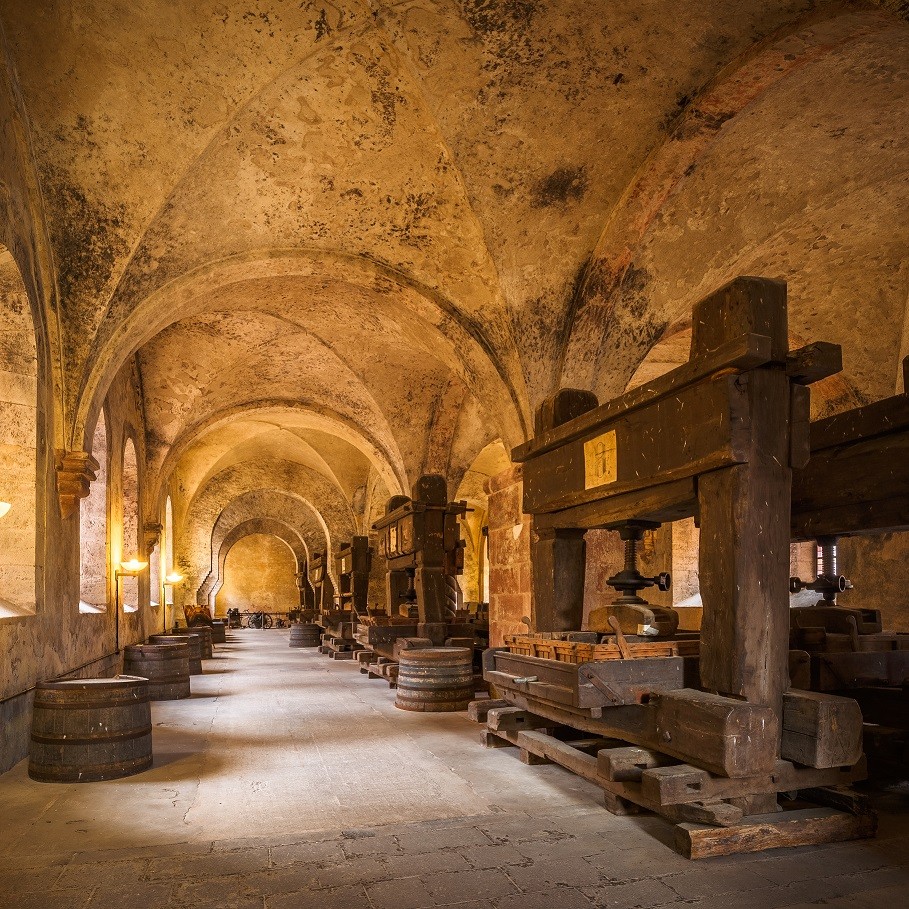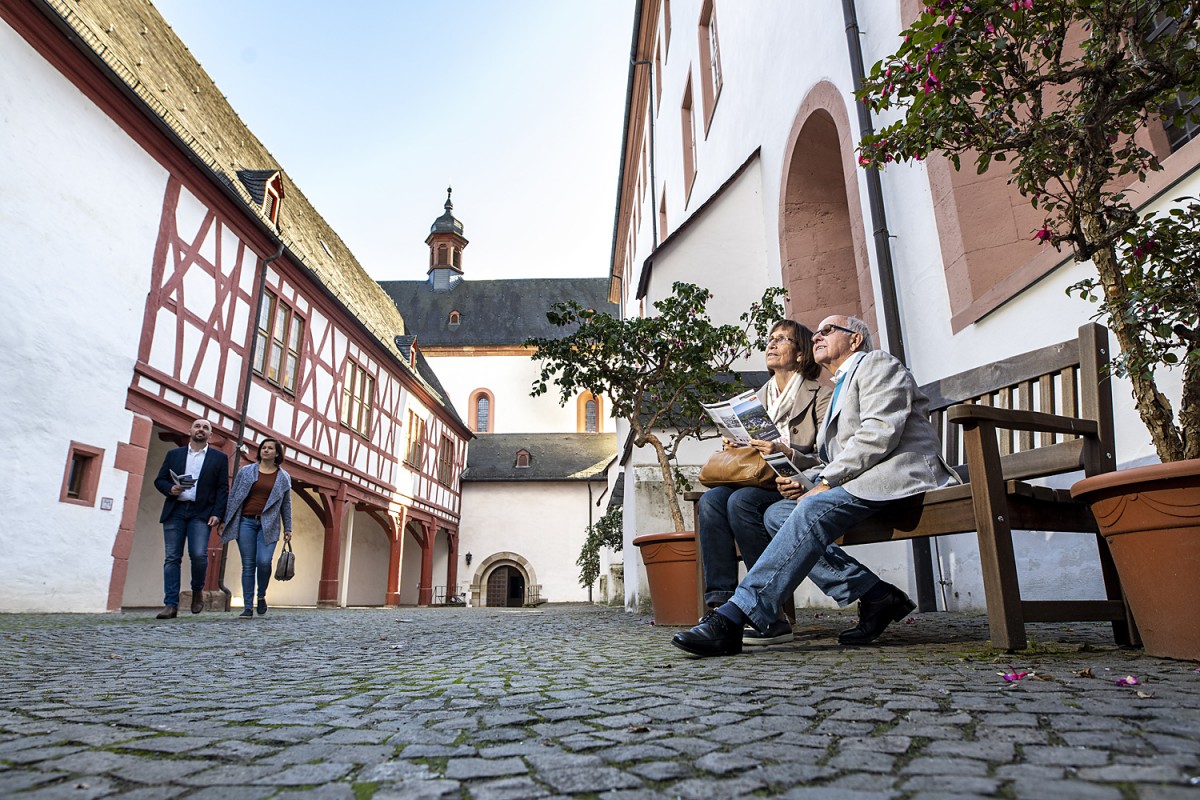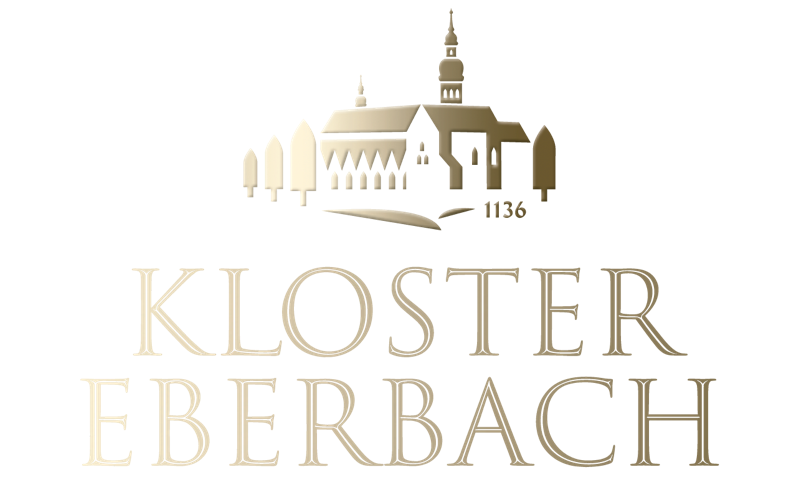Basilica
The Monastery Church
The majestic, almost nine-century-old walls form the heart of the Eberbach monastery complex. The extraordinary acoustics and the architectural expanse ensure a surprisingly long reverberation of up to eight seconds. Since 1803, the monastery church has no longer been a consecrated place, yet for many it is still the spiritual centre. Today it is used for conferences, weddings and film shoots. Just think of the many scenes in the film adaptation of the novel "The Name of the Rose".
Learn more
The Grisaille Window
Testimony to the Medieval Monastery Church
The only surviving stained glass window from the medieval monastery church is located in the former warming room. Unpainted glass is held by an ornamental lead net. The unadorned grisaille glazing (French gris = grey)
followed the strict commandment of the order and refers to the work of the "Grey Monks" in the churches. Our grisaille window is considered the oldest surviving ornamental glass window of the Cistercians in the German-speaking world.

Monks' Refectory
The Monks' Dining Room
The only heatable room in the enclosure once served the Cistercians as a dining hall and is now used for events. Discover ever new decorations in the fascinating detailed ceiling stucco. The large, dark bookcase bears the so-called "descriptive coat of arms": Kloster | Eber | Bach (monastery | boar | brook).

Monks' Dormitory
The Monks' Dormitory
The dormitory, the monks' sleeping hall, served as the common night's rest for the monastic community. In the early days, the monks rested on wooden cots in the unheated hall, dressed only in their habit. They were usually called into the church shortly after midnight for the first choral prayer. The 72-metre-long Eberbach Monks' Dormitory was built in the 13th and 14th centuries. Due to a floor level that rises by about half a metre from south to north, the already enormous hall appears to have been lengthened again in perspective when viewed from the south, as the height of the column shaft had to be successively reduced by the same amount. The elegant cross-ribbed vaults are based on fretworked capitals and plain wall consoles. With its light vaults, the room forms a perfect example of masterly Gothic architecture.

The Lay Refectory
The Lay Brothers' Dining Room
The lay refectory still largely shows the original face of the oldest monastery hall in Eberbach. Only the sheathing of the columns and the insertion of additional belt arches in the vaults, as they became necessary for structural reasons as a result of an increase in the building's height in the 18th century, modify the appearance. The historic wine presses from the 17th-19th centuries housed here today are witnesses to the centuries-old winemaking tradition that is still cultivated in Eberbach to this day. It was the Cistercian monks who brought the knowledge of the art of
winegrowing and winemaking from their homeland of Burgundy to the Rheingau. Through their work, the lay brothers ensured that this knowledge could be harnessed for Eberbach's rise to become the largest winegrowing estate in the Old Kingdom.

Monastery Alley
The monastery alley separated the buildings of the monks from the buildings and life of the lay brothers ("conversi"), who were also responsible for providing for the abbey residents.

The Chapter House
The Monks' Meeting Room
The chapter house was once the monks' daily meeting room for the morning reading of the Benedictine Rule and the only opportunity for exchange among the community, which was otherwise subject to a vow of silence. Through the later economic success, the Romanesque hall was provided with a magnificent star vault through a Gothic reconstruction.

The Cabinet Cellar
The Fraternei
The Fraternei, the "Brothers' Hall", was the room in which the monks, following the precept of "ora et labora", pursued their domestic work. In the early days, the Eberbach Fraternei probably served mainly for the work of copying books by the choir monks. Before the invention of the printing press, it was almost exclusively the monastic "scriptoria" on whose productivity the dissemination of knowledge in the form of books and other manuscripts rested. The cradle of our occidental culture was thus located in rooms such as the Eberbach Fraternei.

The Romanesque cellar vaults in which the Cistercian monks initially carried out their work together in daylight soon became a place for storing special wines. A "treasure chamber" for the storage of their noblest wines, which they called "Cabinet" in the age of the Baroque in a noble Frenchification. This designation later became a widespread predicate for exquisite wines and is still anchored in German wine law today as "Kabinett". For centuries, the economically very successful Cistercians stored the good vintages in wooden barrels in order to be able to sell them later at high prices. The remains of the so-called "black cellar cloth" bear witness to the alcoholic vapours of the barrels.




